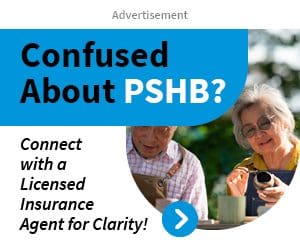Key Takeaways
-
The Postal Service Health Benefits (PSHB) program represents a complete overhaul of healthcare coverage for USPS employees and retirees, with changes effective in 2025.
-
Medicare integration and customized plan options under the new PSHB framework offer an opportunity to maximize benefits and minimize costs.
A Revolution in USPS Health Coverage
The 2025 transition to the Postal Service Health Benefits (PSHB) program isn’t just another administrative shift—it’s a full-scale reimagining of how USPS employees, retirees, and their families access and manage healthcare. Replacing the Federal Employees Health Benefits (FEHB) program, the PSHB is uniquely tailored to address the specific needs of the USPS community. Whether you’re an active worker, a retiree, or part of a family covered under USPS benefits, the new program presents significant changes that demand your attention.
Why does this matter? Because you’re moving into a healthcare landscape that prioritizes personalization, Medicare integration, and financial efficiency. As you prepare for these changes, now is the time to explore how they will impact your healthcare choices and costs.
What Makes PSHB Different?
The PSHB program is more than just a replacement for FEHB—it’s an upgrade designed specifically for the USPS workforce and retirees. Here are some of the standout differences:
-
Exclusive Focus: PSHB is exclusively for USPS employees, retirees, and their families, meaning the program is specifically designed with your needs in mind.
-
Mandatory Medicare Coordination: For Medicare-eligible retirees, Part B enrollment is now a requirement. This integration ensures seamless healthcare coverage while reducing your out-of-pocket costs.
-
Improved Drug Benefits: A $2,000 annual cap on out-of-pocket prescription drug costs through Medicare Part D brings financial relief to those managing chronic conditions or high medication expenses.
-
Streamlined Plan Options: Say goodbye to generic, one-size-fits-all plans. PSHB narrows the focus to plans better suited to your unique healthcare needs, offering more relevant coverage options.
These differences mean better alignment between your healthcare needs and the coverage options available. But they also mean you’ll need to stay informed and proactive to make the most of this transition.
Medicare’s Role in PSHB
Medicare plays a critical role in the new PSHB program, particularly for retirees. By integrating Medicare Part B and PSHB, the program ensures more comprehensive healthcare coverage with reduced costs. Here’s why this matters:
-
Enhanced Coverage: Medicare Part B complements PSHB by covering outpatient services, preventive care, and other medical expenses. Together, they create a robust healthcare safety net.
-
Cost Predictability: The integration reduces unexpected costs, especially for high-expense areas like specialist visits or extended hospital stays.
-
Prescription Savings: Starting in 2025, Medicare introduces a $2,000 cap on out-of-pocket prescription drug expenses. This alone could significantly lower costs for individuals on long-term medications.
If you’re nearing Medicare eligibility, enrolling in Part B should be a top priority to ensure your PSHB coverage remains intact. Missing this step could result in penalties or disruptions to your healthcare access.
Key Enrollment Dates to Watch
Navigating the PSHB transition requires attention to several critical deadlines. Staying on top of these dates will ensure you’re covered without interruption:
-
2024 Open Season: From November 11 to December 9, you can select your PSHB plan for 2025. Use this time to explore your options and ensure your chosen plan aligns with your healthcare priorities.
-
Medicare Initial Enrollment Period (IEP): If you’re approaching age 65, your seven-month window for enrolling in Medicare begins three months before your birthday month and ends three months after. Coordinating this with PSHB enrollment is crucial.
-
Special Enrollment Periods (SEPs): Life changes like retirement or loss of other coverage may qualify you for an SEP, allowing you to make plan adjustments outside of Open Season.
Missing these deadlines can result in default plan assignments or penalties, so make sure to mark your calendar and act promptly.
How Retirees and Families Will Benefit
The transition to PSHB is a game-changer for retirees and their families. With a focus on personalized care and Medicare integration, here’s what you can expect:
-
Comprehensive Coverage: PSHB plans work in tandem with Medicare to offer extensive coverage for both routine and specialized care. From preventive services to chronic disease management, your needs are prioritized.
-
Lower Costs: The $2,000 prescription drug cap, combined with Medicare’s cost-sharing structure, makes healthcare expenses more predictable and manageable.
-
Targeted Options: Unlike FEHB, where plans were designed for a wide federal audience, PSHB plans are built specifically for the USPS community, ensuring better alignment with your healthcare needs.
For families, these benefits extend to dependents as well, providing a cohesive approach to healthcare that supports every member of your household.
Preparing for the Switch
The transition to PSHB may feel overwhelming, but with some preparation, you can ensure a smooth process. Here are the steps to take now:
-
Review Your Current Plan: Take stock of your existing FEHB benefits. What works? What doesn’t? Knowing this will help you choose the best PSHB plan.
-
Confirm Medicare Enrollment: If you’re eligible for Medicare, make sure you’ve enrolled in Part B. This step is non-negotiable for maintaining your PSHB coverage.
-
Compare PSHB Plans: Use USPS-provided tools to evaluate the different plans available. Look at premiums, coverage options, and how they coordinate with Medicare.
-
Act During Open Season: Don’t wait until the last minute. Make your plan selection during Open Season to avoid default assignments or gaps in coverage.
Being proactive will save you from unnecessary stress and ensure you’re fully prepared for the January 2025 rollout.
What Happens If You Don’t Take Action?
Failing to engage with the PSHB transition could lead to avoidable challenges:
-
Default Enrollment: If you don’t select a plan during Open Season, you’ll be automatically enrolled in a default option. This might not meet your specific needs.
-
Medicare Penalties: Delayed Part B enrollment comes with lifelong penalties that increase your monthly premiums.
-
Coverage Gaps: Without proper coordination, you risk facing disruptions in care or unexpected out-of-pocket costs.
To avoid these pitfalls, take the time to review your options and make informed decisions during Open Season.
Making the Most of PSHB
The new PSHB program offers an opportunity to reevaluate your healthcare needs and maximize your benefits. Here’s how to make the most of this transition:
-
Stay Informed: USPS will provide resources to help you navigate the switch. Keep an eye out for mailers, webinars, and other educational materials.
-
Plan for Costs: Factor in Medicare Part B premiums and any associated PSHB costs when budgeting for 2025. This will help you avoid surprises.
-
Ask Questions: Don’t hesitate to reach out to USPS representatives for guidance. The more you understand, the better equipped you’ll be to make the right choice.
-
Think Long-Term: Choose a plan that not only meets your current needs but also provides flexibility for future healthcare demands.
Taking these steps will position you to take full advantage of everything PSHB has to offer.
Reinventing Healthcare for USPS Employees
The shift to the Postal Service Health Benefits program isn’t just a change—it’s a chance to redefine how USPS employees and retirees approach healthcare. With tailored plans, Medicare integration, and a focus on cost management, the PSHB program sets a new standard for employee benefits. Take control of your healthcare journey today to ensure a healthier tomorrow.











